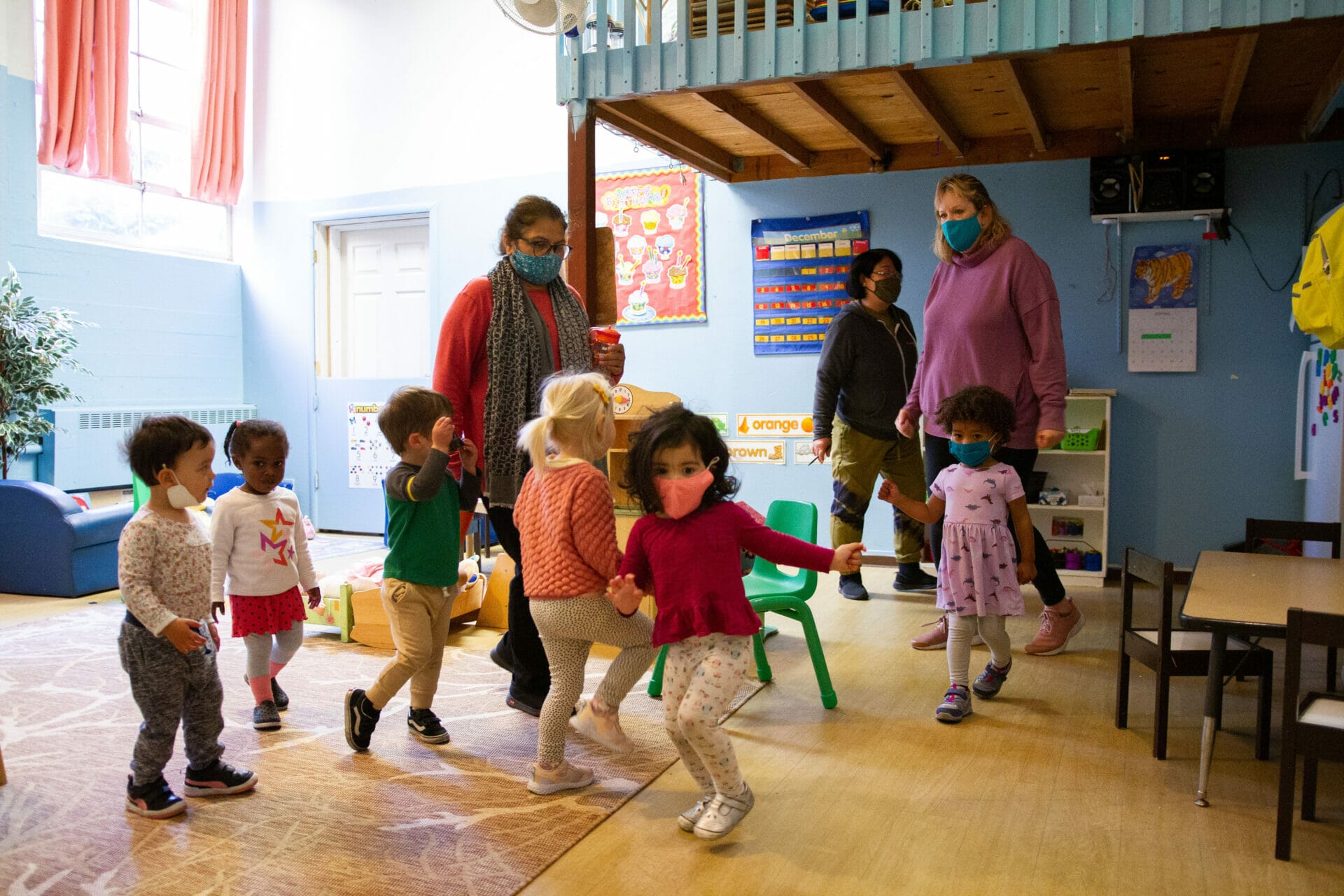“It is far more difficult than anyone can possibly imagine. The stress to not only educate and support but the expectation to keep safe and healthy is astronomical. It is always our job to do these things for children, but our ability to do so under all of the current restraints and requirements has become more and more difficult.”
Center Teacher
CSCCE is eager to share data from the 2020 California Early Care & Education Workforce Study, the state’s first comprehensive early childhood workforce study in 15 years. In the midst of a global pandemic that placed extraordinary demands on child care providers, more than 7,500 early educators throughout California generously gave their time to share their experiences. Though their services were hailed as essential throughout the pandemic, early education providers themselves often felt undervalued and unsupported as they faced health risks, increased costs and pressures, and ever-changing guidelines. They were forced to abandon many established classroom practices, to rethink what good practice would be, and experiment and correct approaches that did not work in a new era of COVID-19 safety regulations.
We extend our sincere gratitude to these professionals for participating in the study and entrusting us with their information and personal stories. We are committed to being good stewards of the data, ensuring its accuracy and quality, and making it available to educators and stakeholders to inform the urgent early care and education workforce policy needs before us.
An In-Depth Survey of the California ECE Workforce
From October through December 2020, CSCCE surveyed representative samples of approximately 2,000 center administrators and 3,000 home-based family child care providers, as well as non-probability samples of about 2,500 center-based teaching staff members and 280 transitional kindergarten teachers. We administered four surveys of approximately 100 questions each, resulting in an extensive data set that includes program characteristics, characteristics of children served, program staffing, workforce demographics (including age, gender, race and ethnicity, education, experience, tenure, and compensation), as well as information on economic well-being, work environment, and the impact of COVID-19.
The findings will help us understand, for example, systemic inequities that have led to racial pay gaps and harsh economic hardships among this workforce, and the challenges, needs, and opportunities for reform across the sector. This information is needed more than ever as California navigates the effects of the pandemic on our early care and education system and individual workforce members, and determines how to allocate unprecedented state and federal funding.
As our team analyzes thousands of pieces of data, we are committed to maintaining its integrity and releasing it in a comprehensive way that does justice to educators’ stories. Rigorous data analysis is a time-consuming process, yet we are aware of the urgent need for it to inform policy development. Therefore, we are sharing preliminary California Workforce Study findings in a series of “data snapshots,” the first of which, New Data Shows Early Educators Equipped to Teach TK, was released in August.
Today’s Release
Our new data snapshot, Estimated Size of the CA ECE Workforce is our second release. It provides estimates of the size of California’s early education workforce by role, program funding source, and region for center-based teaching staff and family child care providers and assistants. We will follow this short, snapshot format for this series in order to release findings as rapidly as we are able, while also balancing the demand for more comprehensive reports. Additional results will be forthcoming in January 2022.
Teachers’ Experiences in Their Own Words
In addition to the extensive quantitative data, we also collected a substantial volume of qualitative responses to open-ended questions across the four surveys. Our respondents wrote more than half a million words. They were eager to share their commitment to working with young children, resilience in the face of financial and health risks, and the struggle and heartache of working in underpaid and undervalued positions.
“We are under a lot of stress. We want to provide childcare to families and keep doing the job we love but it’s very scary…We want to help our families but also need to be safe. Sometimes I think I should close for safety but I need my income and like what I do. It’s very difficult right now.”
Family Child Care Provider
“We are a forgotten field. Benefits and retirement options are a dream for us. We are underpaid, undervalued, and under appreciated. Many of us choose this field because we understand its importance. We received higher level degrees in pursuit of helping young children develop…We will continue losing quality teachers and administrators unless they can be adequately compensated for all that they do.”
Center Director
In addition to sharing workforce statistics, we are also developing qualitative reports that capture educators’ experiences in their own words. In early 2022, we will release our first, focused on economic well-being.



